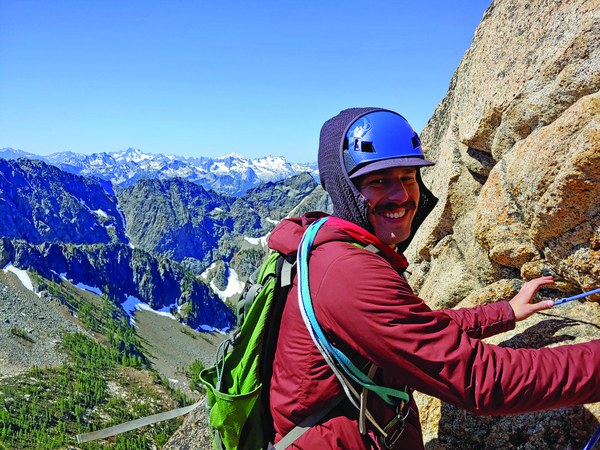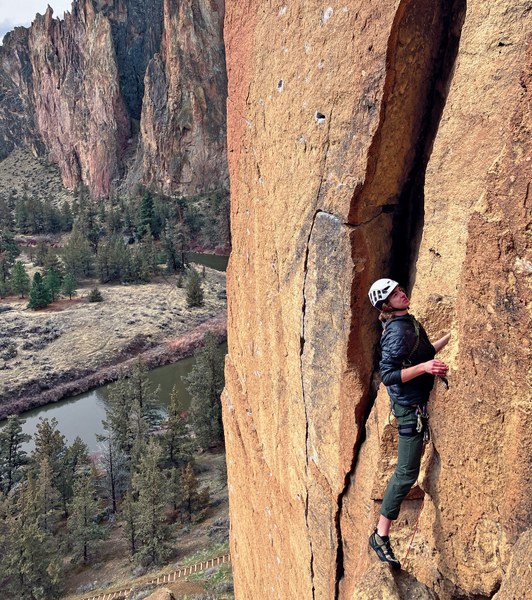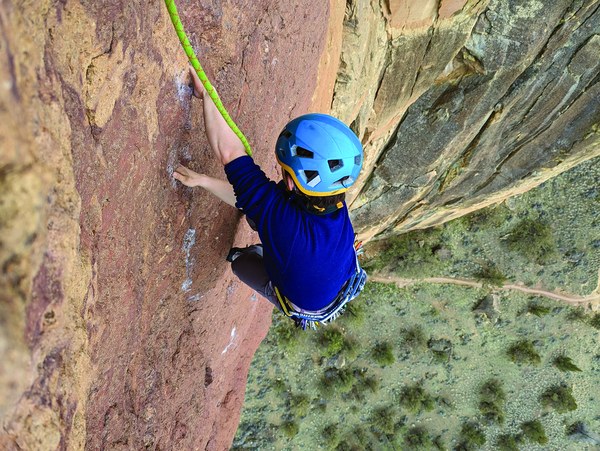
Being outdoorsy didn’t come naturally to me. Although I’m from a small, blue-collar farming community, my parents' idea of spending time outside meant performing back-breaking work in the mid-Atlantic humidity or struggling to stay warm in Carhartt coveralls during blustery winters. In 2013, I migrated to Wyoming and met people who had different ideas of the outdoors: that it could be healing, peaceful, and most importantly, fun.
Suddenly surrounded by people with years of outdoor experience, I felt miles behind. Mentally, it seemed like my pack was heavier than everyone else’s, but I pushed forward and made the most of it.
When I moved to Washington in 2017, I leaned into the mountain biking community. What I left behind in Wyoming, I found here. Well, almost. My life was full of loamy single track and steep rock gardens, but deep down I missed the alpine starts, boot packs, and scrambles needed to ascend the Tetons. I felt something unfinished in my relationship with the mountains.
I applied for and got a job at The Mountaineers, a perfect opportunity to blend work and play and become further connected with the outdoor community. But similar to my experience in Wyoming, I had a lot of catching up to do, specifically regarding climbing. I decided to head south to Smith Rock State Park with a friend and former American Mountain Guide Association (AMGA) guide to get more comfortable with sport climbing. I'd been climbing before, but never in a leadership role, learning instead with friends through books and YouTube. While those experiences were foundational, there was room for improvement.
 Alvaro trying to look comfortable in the Alpine, Becky Route, Liberty Bell. Photo by Cailin Henley.
Alvaro trying to look comfortable in the Alpine, Becky Route, Liberty Bell. Photo by Cailin Henley.
All eyes on me
At Smith Rock, my lack of experience was on full display. I was top-roping an easy route that another party was interested in, so my friend told me to clean the anchor and rappel down. I had successfully done all these skills on the ground and rock before, but put on the spot, all knowledge and confidence left my body, replaced by panic and anxiety. I’ve seen climbers get shaky legs hundreds of feet up in the air; I was only 100 feet off the ground.
I managed to clean the anchor and rappel down, thanks to my very patient climbing partner. When I got down, I felt like I’d been chewed up and spat out. Any inkling of confidence was shot. The rest of the day, I was caught up dissecting my miscues, wondering if there was space for me in the climbing world.
The following day, we spent most of our time practicing buddy rescue and belay escapes on the ground. We closed the trip with a mellow multi-pitch on Koala Rock, and by the time we topped out, I wailed at the top of my lungs. I’m not sure if I was celebrating the summit or the fact that I didn’t have to climb anymore. Regardless, I realized I wanted to take up space in the climbing world.
 MAC Student, Christian, eyeing their next move. Photo by Ryan Welsh.
MAC Student, Christian, eyeing their next move. Photo by Ryan Welsh.
It’s going to be okay
Months later, I was scheduled to go back to Smith Rock with our Mountaineers Adventure Club (MAC). Most of the students had been climbing longer than I had, and about half of them were part of a climbing team at a local gym. I would be lying if I said I wasn’t intimidated.
At previous jobs, I had often been the person with the most experience, encouraging students to be comfortable with being uncomfortable. I would assume the role of loudest cheerleader, uplifting and motivating students when the going got tough. My responsibility was to tell everyone that everything would be okay, which experience had taught me to be true. This time, I needed someone to tell me it was going to be okay.
On our first morning at Smith Rock, the MAC students were performing pistol squats and various intense warm-ups (for fun). I was overawed by this, but the students were full of encouragement and positive reinforcement. I climbed mostly everything the students did, but where they flew up the crag, I crawled. Even so, I felt the whole state park was a judgment-free zone because of those students.
My favorite memory was watching a student climb a 5.10c. The pitch was slightly overhung, with small holds and burly moves. I watched in awe, wishing I had been that cool when I was 15 years old. Heck, I wish I was that cool now! They were on the wall like they had a lifetime of experience under their belt, but when they returned to the ground, they were fifteen again. This was the revelation I needed: there wasn’t anything I had to prove to these students. I only needed to be present and have fun.
 MAC Student, Iris, making quick work of a crack feature on Monkey Face. Photo by Morgan Heater.
MAC Student, Iris, making quick work of a crack feature on Monkey Face. Photo by Morgan Heater.
The kids are alright
My bond with the MAC students grew significantly on that trip. I don’t think the students know, but they taught me a lot. I realized not all teaching moments involve technical skill or technique, but merely your presence and willingness to be vulnerable. I learned to drop my ego, especially during humbling moments like seeing a student climb in their croc sandals on a pitch I thought was challenging. I now understand that being uncomfortable is the nucleus of climbing.
These unexpected experiences taught by youth made me realize this generation of young people isn't given enough credit. They may only be in high school, but they have an abundance of life experiences, they embrace challenges, and they have deep patience and grace. Thanks to the students, I’ve gone from trembling on basic crag climbs to jumping headfirst into my first ice climbing trip. I am a better climber and, more importantly, a better person because of them.
It is a privilege to work with Youth Clubs students and their families, and to recreate on the lands of the Coastal Salish Tribes. I know the trail that lies ahead involves plenty more moments of self-discovery at the crag, and with the help of our Youth Clubs students, I will embrace these moments of discomfort and reinforce the sense of belonging I experience as a climber with The Mountaineers.
I implore you to spend time outside among people with different lived experiences and perspectives. I can say from experience that you will be a better person because of it. I also strongly encourage you to consider becoming a youth programs volunteer with our Youth Clubs. Our Mountaineers youth sure know how to create unforgettable adventures.
This article originally appeared in our summer 2024 issue of Mountaineer magazine. To view the original article in magazine form and read more stories from our publication, visit our magazine archive.
 Alvaro Juarez
Alvaro Juarez